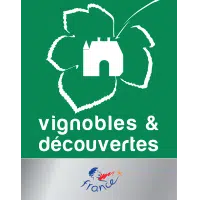A unique terroir
From our geographical location to the typicity of our soils and our grape varieties, the typology of the Domaines Latrille vineyard brings together for both Château Jolys and Château de Jurque the ideal conditions for the optimum development of our grapes.

1. Birth of the vineyard
Without being able to certify its presence in the Roman era, we find the first traces of the Jurançon vineyard at the end of the 10th century, with a wine transaction in the commune of Lucq-de-Béarn, at the abbey of Saint-Vincent. The use of the Manseng grape variety is recorded as early as the 13th century.
2. A Royal History
In 1538, Jurançon became part of royal history when Henri d'Albert - Henri II of Navarre - bought a plot of vines in Jurançon. This royal history will continue with an anecdote known by all: the baptism of the future king Henri IV with garlic and Jurançon. This notoriety contributed to the development of the vineyard.
3. A dark period
Economic and social crises, ravaging of the vineyard by phylloxera, oidium and mildew, the end of the 19th century was a dark period for the Jurançon appellation, which almost precipitated its extinction.
4. Renaissance of the vineyard
The 20th century was a real period of rebirth for Jurançon and a return to tradition. In 1936, Jurançon became one of the first Appellation d'Origine Contrôlée for sweet white wine, and the definition of the production conditions ensured a high quality level of the wines. The Jurançon appellation was extended to dry white wine in 1975.
5. Expansion and sustainability
Since the 1980's, independent winegrowers have structured themselves, created a "wine route" and perpetuated the image of Jurançon. With great names such as Charles Hours, Henri Ramonteu or Yvonne Hegoburu, Pierre-Yves Latrille has participated in the expansion and the fame of the vineyard.
6. The Jurançon appellation today
To date, Jurançon represents 1100 ha located in the Pyrénées-Atlantiques, spread over 25 communes around Jurançon and Monein... In 2005, the INAO counted a production of 27,000 hectoliters of sweet wine (3.5 million bottles) and 15,000 hectoliters of dry Jurançon (1.2 million bottles).







